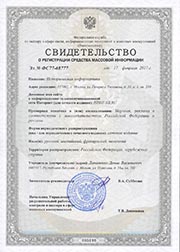|
MAIN PAGE
> Back to contents
Historical informatics
Reference:
Zhukov D.S., Kanishchev V.V., Lyamin S.K.
The Study of Peasant Disturbances Intensity in European Russia in the Second Half of the 19th Century by Means of Self-Organized Criticality Theory
// Historical informatics.
2017. № 1.
P. 38-51.
DOI: 10.7256/2306-0891.2017.1.22145 URL: https://en.nbpublish.com/library_read_article.php?id=22145
The Study of Peasant Disturbances Intensity in European Russia in the Second Half of the 19th Century by Means of Self-Organized Criticality Theory
Zhukov Dmitry Sergeevich
PhD in History
Associate professor, Derzhavin Tambov State University
of. 316, 33, Internatsional'naya ul., Tambov, Tambovskaya oblast', Russia, 392000

|
ineternatum@mail.ru
|
|
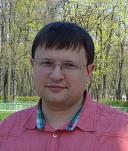 |
Other publications by this author
|
|
Kanishchev Valery Vladimirovich
Doctor of History
Professor, Derzhavin Tambov State University
33, ul. Internatsional'naya, g. Tambov, Tambovskaya oblast', Russia, 392000

|
valcan@mail.ru
|
|
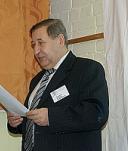 |
Other publications by this author
|
|
|
Lyamin Sergey Konstantinovich
PhD in History
Associate professor, Derzhavin Tambov State University
33 Internatsional'naya ul., Tambov, Tambovskaya oblast', Russia, 392000

|
laomin@mail.ru
|
|
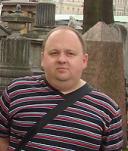 |
Other publications by this author
|
|
|
DOI: 10.7256/2306-0891.2017.1.22145
Received:
28-02-2017
Published:
20-05-2017
Abstract:
The article presents the results of analysis of long time data series reflecting the intensity of peasant disturbances in various guberniyas of European Russia in the second half of the 19th century by means of self-organized criticality theory . The types of peasant protests are presented that depend on the regularity of protest intensity fluctuations in different guberniyas. It has been found that the population density and the average allotment of land exerted the most powerful influence on the formation of protest potential. A hypothesis has been proposed and substantiated that the presence of pink noise in changes of peasant disturbances intensity means that most of regional communities were in a critical state. This demonstrates serious risks of system stability throughout the period understudy. Inner social environment and structural features existed that led to leaping fluctuations and unexpected increase of peasant disturbances. Regional communities were prone to uprisings under the influence of quite usual factors.
Keywords:
interdisciplinary studies, cluster analysis, history, social processes, correlation analysis, pink noise, spectral analysis, the theory of self-organized criticality, Russia , peasant disturbances
This article written in Russian. You can find original text of the article here
.
Подходы
Понятие «самоорганизованная критичность» используется для обозначения определённого состояния систем. Атрибутом такого состояния является розовый шум – процесс, который состоит из подъёмов и спадов, каждый из которых также представляет собой совокупность подъёмов и спадов меньшего масштаба, которые, в свою очередь, также являются набором ещё меньших подъёмов и спадов и т.д.
Состояние критичности подразумевает, что любое, даже самое незначительное, на первой взгляд, событие имеет не только локальные, но и всеобщие для системы последствия. Системы в состоянии критичности, как правило, переживают быстрые и значительные трансформации – лавины. Розовый шум, таким образом, указывает на возможность реализации катастрофического сценария развития. Впрочем, известны реальные системы, которые обладая специфическими механизмами обеспечения устойчивости, существуют неограниченно долго, издавая розовый шум. Теория самоорганизованной критичности (СОК) претендует на то, чтобы дать универсальное объяснение природы розового шума и различного рода эффектов, с ним связанных.
Помимо розового шума, значимым эвристическим потенциалом обладают понятия белый и коричневый (броуновский, красный) шумы. Белый шум это хаотический процесс, лишённый каких-либо закономерностей. Такой процесс не имеет памяти и является результатом смешения множества разнообразных несвязанных событий. Коричневый шум – это характеристика процесса с очень сильной краткосрочной памятью. Здесь каждое последующее событие сильно зависит от непосредственно предшествующего события.
Розовый шум соединяет некоторые свойства белого и коричневого шумов. Он, также как и коричневый, обладает памятью. Однако эта память не краткосрочная, а долговременная. Каждое значение процесса зависит не от непосредственно предшествующего значения, но прямо от всех событий, произошедших ранее, – от некоторой закономерности, которую они генерируют. Для исторических исследований важно то, что розовый шум характеризует процесс, зависящий в некоторой мере от предшествующих состояний в течение длительного прошлого. В то же время, каждая конкретная точка такого процесса не является строго детерминированной.
Литература
Основатели теории СОК – П. Бак и коллеги – полагали, что область применения этой теории не ограничивается лишь естественными науками [1],[2],[3],[4]. Немалые усилия по распространению и адаптации подходов СОК в междисциплинарном исследовательском пространстве предприняли Д. Тьюкот [5],[6], Г. Бранк [7],[8],[9], Г.Г. Малинецкий [10]. В России предложения исследовать эффекты СОК в социальных процессах прозвучали в работе С.П. Курдюмова, Г.Г. Малинецкого и А.В. Подлазова [11], а также в статье Л.И. Бородкина [12].
Утверждения, что теория СОК представляет эвристическую ценность для изучения динамики социальных систем, присутствуют во многих теоретико-методологических и обзорных исследованиях [13],[14],[15],[16],[17],[18]. Однако работы, содержащие приложения теории СОК к анализу конкретных исторических процессов, единичны [19],[20],[21],[22],[23].
Вместе с тем, подходы синергетики и теории хаоса постепенно проникают в социо-гуманитарные исследовании: и за рубежом, и в России возникают новые исследовательские направления, развивается соответствующая терминология и инструментарий моделирования [23],[24],[25],[26],[27],[28],[29].
Задача, исходные данные и методы их обработки
Главная цель этого исследования заключается в том, чтобы ответить на вопрос, наличествует ли розовый шум в длинных рядах данных, отражающих интенсивность крестьянских волнений в различных губерниях Европейской России во второй половине XIX в. Обнаружив розовый шум, мы получаем право выдвигать гипотезы и объяснительные схемы на основании теории СОК. Именно поэтому для нас столь важно уметь распознавать это явление.
Исходные данные для исследования были извлечены из БД «Крестьянские выступления в губерниях Европейской России за 1857-1900 годы». БД содержит сведения о событиях, зафиксированных в серии сборников документов «Хронике крестьянского движения в России» в XIX – начале XX вв., изданной в 1950 – 1960-х гг. под общей редакцией академика Н.М. Дружинина. Это крупное издание является, по существу, для нашего исследования синтетическим агрегированным историческим источником, так как оно составлено на основании большого массива разнообразных документальных материалов.
Особенность БД состоит в том, что в ней отражено не просто количество крестьянских выступлений, а интенсивность протестной активности по уездам. В БД содержатся сведения не только о фактах выступлений, но и количество месяцев, в течение которых длилось то или иное выступление, а также число уездов, которые были им охвачены. То есть если одно/единое выступление длилось два месяца, то оно регистрируется как два события, если три месяца – то как три события, и т.д. Аналогично, если одно/единое выступление охватило два уезда, то оно также регистрируется как два события, благодаря чему БД косвенно учитывает географический охват выступлений. (Более точную дифференциацию – например, по сёлам – во многих случаях затруднительно извлечь из источников).
Таким образом, событие в БД – это не отдельное выступление, а некоторая условная единица, указывающая на интенсивность протестной активности. Количество событий отражает: (1) число фактов начала выступлений, (2) длительность выступлений и (3) их географический охват. Количество событий можно рассматривать как индекс интенсивности протестов, который даёт более полное представление о величине феномена, нежели простое количество выступлений. Например, два разных (по географическому охвату и по длительности) выступления фиксируются в нашей БД не как «один бунт» и «ещё один бунт», а как разное количество событий, что позволяет придать разный вес историческим фактам, которые и в реальности не были равны по продолжительности и размаху.
Обработка данных была направлена на получение суммарных значений интенсивности протестной активности по месяцам и полугодиям по отдельным губерниям. Итоговые графики протестной активности по некоторым губерниям представлены на рис. 1.
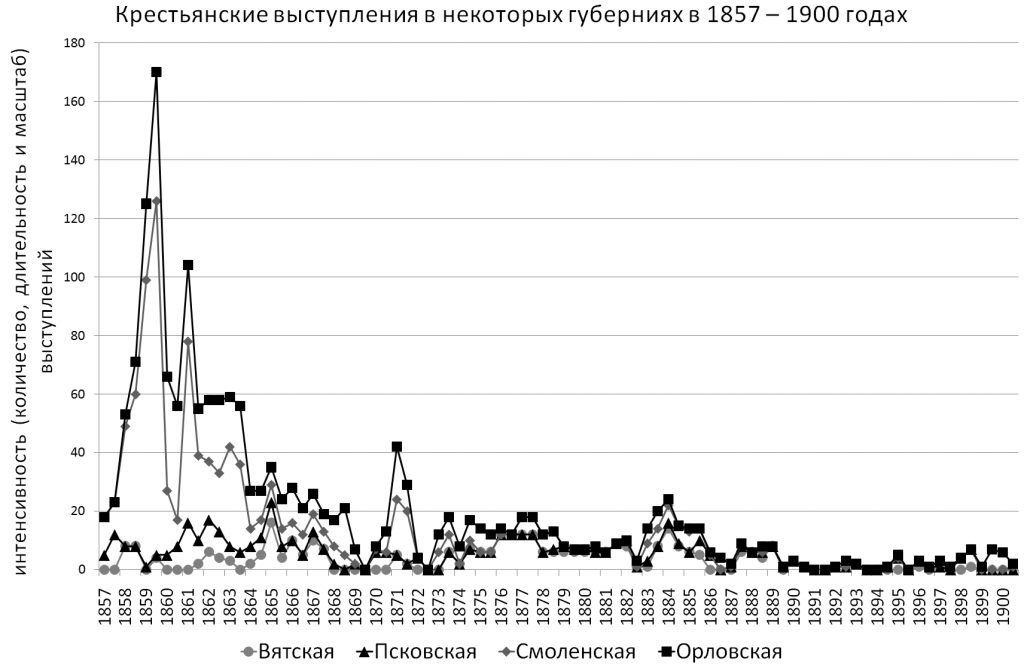
Рис. 1. Исходные данные по интенсивности крестьянских волнений
Для обнаружения и анализа розового шума необходимо провести спектральный анализ исследуемого процесса. Для спектрального анализа используется быстрое преобразование Фурье. Эта процедура позволяет разложить любой процесс, представленный в виде изменяющихся во времени данных, на ряд гармоник – простых сигналов с постоянной частотой и амплитудой. Результат спектрального анализа – спектрограмма – это таблица, в которых поставлены в соответствие частоты и амплитуды отдельных гармоник. В графическом виде спектрограмма, как правило, строится в двойной логарифмической системе координат, где по оси х откладывается частота, а по оси у – мощность, пропорциональная квадрату амплитуды. Наклон степенной линии тренда (если таковая имеется), позволяет охарактеризовать процесс как белый, коричневый или розовый шум.
Формула (1) определяет степенную линию тренда и связывает величины f (частота) и S (мощность).

От α («альфа») – показателя степенного закона – зависит наклон прямой в спектрограмме. Если α ≈ 0, то прямая параллельна оси х – и такой сигнал, возможно, является белым шумом. А если α ≈ 2, то такой шум считается коричневым. Если α ≈ 1, то мы имеем дело с розовым шумом.
Кроме того, мы использовали стандартный математический инструмент для определения степени достоверности тренда – R2. Чем ближе значение R2 к единице, тем надежнее линия тренда аппроксимирует исследуемый процесс.
Поскольку для идентификации белого шума требуются более обширные данные и специальные тесты, то мы может говорить о наличии белого шума в рядах данных лишь гипотетически. Во всяком случае, низкие значения R2 при околонулевых величинах α свидетельствуют об отсутствии закономерностей, свойственных розовому и коричневому шумам, что, в целом, достаточно для наших интерпретаций.
Более подробно методологические подходы и инструментарий идентификации розового шума освещены в других наших статьях [30],[31].
Мы не могли использовать для спектрального анализа помесячные данные, поскольку при таком разбиении мы получаем, по большей части, нулевые ряды. В то же время мы не могли использовать и погодовое разбиение, поскольку имели бы в этом случае недостаточное количество точек данных для наших аналитических процедур. Поэтому мы использовали данные по полугодиям.
Результаты и интерпретации
Сведения о полученных величинах α по губерниям представлены в таблице 1.
Таб. 1. Результаты спектрального анализа интенсивности крестьянских волнений
|
Губернии, 1857-1900
|
α
|
R2
|
Количество событий, зафиксированных в БД
|
|
Владимирская
|
0,81
|
0,383
|
377
|
|
Вологодская
|
0,82
|
0,763
|
152
|
|
Воронежская
|
1,09
|
0,576
|
299
|
|
Вятская
|
0,88
|
0,665
|
313
|
|
Казанская
|
1,00
|
0,694
|
390
|
|
Калужская
|
0,70
|
0,348
|
335
|
|
Костромская
|
0,71
|
0,315
|
165
|
|
Курская
|
1,51
|
0,750
|
381
|
|
Московская
|
0,96
|
0,473
|
279
|
|
Нижегородская
|
0,85
|
0,447
|
360
|
|
Новгородская
|
1,09
|
0,607
|
428
|
|
Олонецкая
|
1,46
|
0,624
|
100
|
|
Оренбургская
|
0,53
|
0,244
|
88
|
|
Орловская
|
1,67
|
0,723
|
509
|
|
Пензенская
|
1,19
|
0,621
|
443
|
|
Пермская
|
0,54
|
0,186
|
192
|
|
Петербургская
|
1,03
|
0,494
|
150
|
|
Псковская
|
0,76
|
0,636
|
179
|
|
Рязанская
|
1,55
|
0,678
|
318
|
|
Самарская
|
0,98
|
0,475
|
404
|
|
Симбирская
|
0,53
|
0,259
|
240
|
|
Смоленская
|
1,43
|
0,500
|
741
|
|
Ставропольская
|
1,15
|
0,663
|
105
|
|
Тверская
|
0,99
|
0,543
|
209
|
|
Уфимская
|
1,52
|
0,702
|
172
|
|
Ярославская
|
0,55
|
0,227
|
113
|
|
Саратовская
|
0,93
|
0,541
|
731
|
|
Тамбовская
|
0,93
|
0,502
|
339
|
|
Тульская
|
0,88
|
0,498
|
220
|
Величины α в серых ячейках вызывают сомнение, поскольку по Владимирской, Калужской и Костромской губерниям значения R2 относительно малы при относительно высоких α. Для этих губерний необходимо уточнение исходных данных, путём их верификации и (или) дополнения. На рис. 2 – 5 представлены некоторые спектрограммы, которые иллюстрируют разные типы результатов.

Рис. 2. Спектрограмма интенсивности крестьянских волнений в Вологодской губернии с 1857 по 1900 год (α=0,82)

Рис. 3. Спектрограмма интенсивности крестьянских волнений в Вятской губернии с 1857 по 1900 год (α=0,88)

Рис. 4. Спектрограмма интенсивности крестьянских волнений в Курской губернии с 1857 по 1900 год (α=1,51)

Рис. 5. Спектрограмма интенсивности крестьянских волнений в Рязанской губернии с 1857 по 1900 год (α=1,55)
В большинстве исследованных губерний в рядах данных обнаружен розовый шум, что свидетельствует о том, что объект (в данном случае – российский крестьянский социум) пребывал в состоянии самоорганизованной критичности. Это позволяет применять к описанию свойств и закономерностей развития объекта уже известные объяснительные схемы теории СОК.
Цвет шума индикатирует некоторое состояние социальной системы, которая его генерирует. Поэтому на основании цвета шума в динамике крестьянских волнений можно разработать некоторую типологию крестьянской протестности.
Поскольку исследуемые величины лишь косвенно свидетельствуют о характере социальных процессов, такая типология является предположительной и представляет собой гипотезу, которая требует проверки через сопоставление с известными из источников и литературы фактами. Приведённые описания типов протестности являются попыткой адаптировать естественнонаучные интерпретации применительно к социальным феноменам.
Низкие величины α в протестных процессах, возможно, характерны для общества, в котором протесты не имеют внутренней системной причины и могут быть вызваны краткосрочными и локальными экстраординарными факторами. Такое общество может демонстрировать как высокую, так и низкую протестную активность в зависимости от сиюминутных комбинаций факторов. Но такой социум не является системно революционным (в приложении к крестьянскому социуму уместнее сказать – «бунтарским»). Здесь нет долгосрочных факторов, ведущих к сильным потрясениям; нет структурной готовности к масштабным всплескам протестов. Это общество, которое может быть вовлечено в восстание, но, которое, в сущности, не испытывает в нём долгосрочной необходимости.
Коричневый шум, предположительно, характерен для общества «зрелого протеста» – этот тип противоположен первому. Здесь протестная активность также может быть как высокой, так и низкой. Но переход от высокой к низкой активности, если и происходит, то осуществляется очень медленно, постепенно. Это означает, что социум находится под воздействием неких детерминирующих факторов, которые стабильно воспроизводят приблизительно одинаковый уровень волнений. Эти факторы могут выступать как генераторы или, напротив, как депрессоры протестной активности.
Такое общество способно демонстрировать любой уровень революционизма, но, даже если этот уровень высокий, мы не склонны считать это опасным (с точки зрения возникновения массовых восстаний). К масштабным потрясениям и даже социальным трансформациям ведут скоротечные сильные всплески протестной активности. Просто высокий уровень протестности, если он стабильный, может ни к чему не вести, ибо в этом случае адаптивные механизмы имеют достаточно времени для стабилизации социально-политической системы.
Средний тип протестной активности, который индикатируется розовым шумом, является, возможно, наиболее опасным с точки зрения сохранения системной стабильности. Розовый шум в протестных процессах означает, что в обществе существовали такие внутренние факторы и структурные свойства, которые могли привести к резкому («неожиданному») росту протестов. Это заставляет несколько иначе рассматривать периоды «затишья». Такое «затишье», как мы полагаем, не отменяло системные микроуровневые процессы, создававшие принципиальную возможность макроуровневых лавин – крупных волнений.
Причём, подобные эффекты, могут быть инициированы очень слабыми (практически незаметными для внешнего наблюдателя) внутренними или внешними импульсами. Сегодняшняя «тишь да гладь» сменяется завтра «кровавым бунтом» без «видимых» причин. Такое поведение может быть внешне схоже с поведением общества с первым типом протестной активности. Но в первом типе всплески происходят под воздействием экстраординарных факторов и не имеют системных причин или последствий. А в обществе со вторым типом для столь масштабных всплесков есть и системные причины, и долгосрочные закономерности. Именно поэтому розовый шум характерен для социума с наибольшим потенциалом протестной активности.
Мы предположили, что наличие розового шума в изменениях интенсивности волнений означает, что региональные сообщества, находясь в состоянии критичности, имели потенциал к крупным восстаниям под воздействием ординарных факторов. Как показывает спектральный анализ (Таб. 1), некоторые региональные социумы вполне были склонны к резкому росту интенсивности выступлений под воздействием вполне обычных факторов, взятых вкупе с внутренними свойствами и состоянием самих обществ.
Все три типа могли сменяться для одного общества как фазы, причём, очевидно, в любом направлении: как от белого шума через розовый к коричневому, так и наоборот. Таким образом, величина α может быть использована как индикатор протестного потенциала регионального крестьянского общества.
Если мы условно приравняем потенциал протестной активности к величине α, то получим такие числовые данные, к которым, затем, сможем применить довольно развитый арсенал математических методов.
Во-первых, имеет смысл провести кластеризацию губерний по величине α, чтобы установить, есть ли логика в распределении α.
Во-вторых, имеет смысл провести анализ корреляций распределения α по губерниям с распределениями иных факторов, известных нам для отдельных губерний. Это позволит установить, с какими конкретными факторами был, вероятно, связан изучаемый протестный потенциал.
Кластерный анализ
Для кластерного анализа использованы следующие настройки модуля кластеризации в Statistica: метод – объединение (древовидная кластеризация); правило объединения – взвешенное попарное арифметическое среднее; мера расстояния – евклидово расстояние.
Результаты кластеризации представлены на дендрограмме на рис. 6.
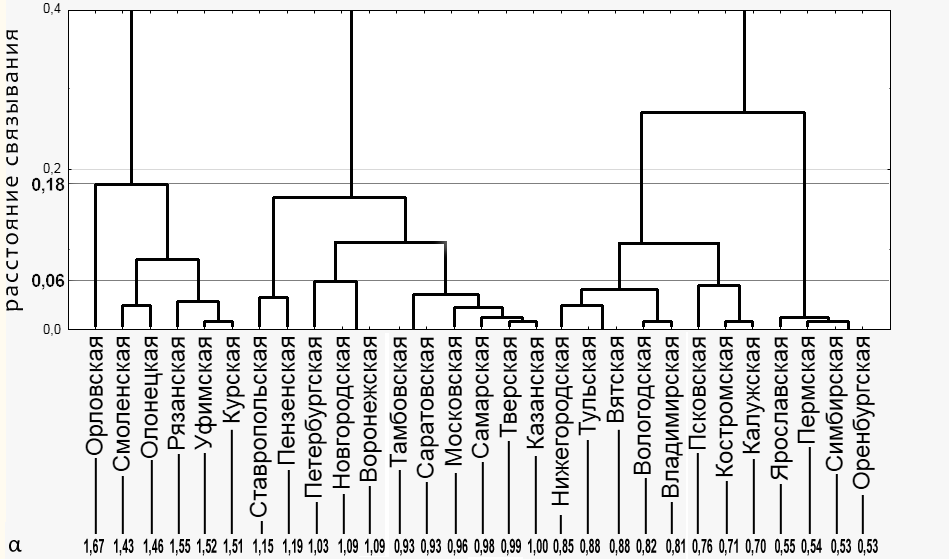
Рис 6. Кластеризация губерний по величине α
На рис. 6 ближе к середине (по оси x) расположены кластеры, губернии в которых имеют α≈1. Ближе к правому краю α в среднем уменьшается (нарастает хаотизация); ближе к левому краю – увеличивается. Причём, внутренний протестный потенциал (способность к масштабным волнениям под воздействием ординарных, обычных факторов) падает от центра к краям.
По мере работы программы мелкие кластеры объединяются во всё более крупные кластеры. Поскольку при этом расстояние связывания растёт, то рано или поздно могут возникнуть кластеры в значительной мере искусственные. Нам важно установить, при каком расстоянии связывания кластеры становятся искусственными и, следовательно, их невозможно качественно интерпретировать. Стандартный способ ответить на этот вопрос заключается в анализе графика (рис. 7), который даёт представление, как растёт расстояние связывания на каждом шаге.
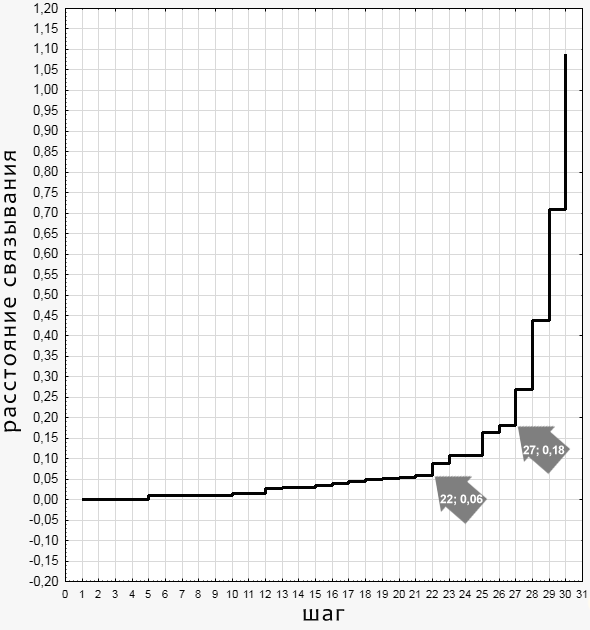
Рис. 7. Изменение расстояния связывания в зависимости от номера шага при кластеризации губерний Европейской России по величине α
Во многих случаях подобные графики имеют пологое (горизонтальное или почти горизонтальное) плато. Это означает, что в течение ряда шагов программе требуется использовать такие расстояния связывания, которые или не увеличиваются или увеличиваются лишь незначительно. Соответственно, кластеры получаются при этом вполне естественные. Однако в некоторой точке плато может заканчиваться и график может уходить резко вверх. Это означает, что для создания новых кластеров программе требуется брать большее расстояние связывания и, следовательно, такие кластеры являются более искусственными.
Точка окончания плато и является границей, отделяющей реальные кластеры от искусственных. На графике на рисунке 7 видно, что плато сменяется подъёмом на 22 шаге при расстоянии связывания = 0,06. Однако этот подъём является не слишком крутым. Затем характер кластеризации меняется ещё один раз – и подъём становится действительно стремительным – это происходит на 27 шаге при расстоянии связывания = 0,18.
Поэтому можно сказать, что кластеры, созданные с расстоянием связывания 0,06 (и менее) являются естественными. Кластеры, созданные с расстоянием связывания 0,18 (и менее) являются в значительной степени естественными. Кластеры, созданные с расстоянием связывания более 0,18, являются в значительной степени искусственными образованиями.
По оси y на дендрограмме (рис. 6) откладывается именно расстояние связывания. Две горизонтальные линии в нижней части соответствуют расстояниям связывания 0,06 и 0,18. Линии пересекают некоторые ветви дендрита – на этих ветвях «висят» именно те кластеры, которые успели образоваться до того, как расстояние связывания достигло значений 0,06 или 0,18 (или в этот самый момент). Эти кластеры представлены в Таб. 2.
Таб. 2. Наиболее крупные «естественные» кластеры при расстоянии связывания 0,06 и 0,18 (крестьянские волнения, величина α, 1857 – 1900 годы)
|
расстояние связывания 0,06
|
расстояние связывания 0,18
|
α
|
|
Орловская
|
Орловская
|
1,67
|
|
Рязанская
|
Рязанская
|
1,55
|
|
Уфимская
|
Уфимская
|
1,52
|
|
Курская
|
Курская
|
1,51
|
|
Олонецкая
|
Олонецкая
|
1,46
|
|
Смоленская
|
Смоленская
|
1,43
|
|
Пензенская
|
Пензенская
|
1,19
|
|
Ставропольская
|
Ставропольская
|
1,15
|
|
Воронежская
|
Воронежская
|
1,09
|
|
Новгородская
|
Новгородская
|
1,09
|
|
Петербургская
|
Петербургская
|
1,03
|
|
Казанская
|
Казанская
|
1,00
|
|
Тверская
|
Тверская
|
0,99
|
|
Самарская
|
Самарская
|
0,98
|
|
Московская
|
Московская
|
0,96
|
|
Саратовская
|
Саратовская
|
0,93
|
|
Тамбовская
|
Тамбовская
|
0,93
|
|
Вятская
|
Вятская
|
0,88
|
|
Тульская
|
Тульская
|
0,88
|
|
Нижегородская
|
Нижегородская
|
0,85
|
|
Вологодская
|
Вологодская
|
0,82
|
|
Владимирская
|
Владимирская
|
0,81
|
|
Псковская
|
Псковская
|
0,76
|
|
Костромская
|
Костромская
|
0,71
|
|
Калужская
|
Калужская
|
0,70
|
|
Ярославская
|
Ярославская
|
0,55
|
|
Пермская
|
Пермская
|
0,54
|
|
Оренбургская
|
Оренбургская
|
0,53
|
|
Симбирская
|
Симбирская
|
0,53
|
Географическое распределение губерний с различными величинами α представлено на рис. 8.
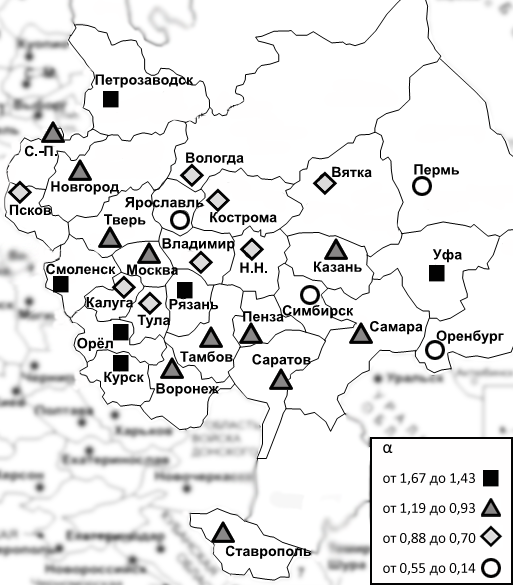
Рис. 8. Географическое распределение губерний с различными величинами α (границы губерний на 1914 год)
Географическая смежность кластеров губерний выражена очень слабо. Например, низкий показатель α обнаруживается как у периферийных губерний, так и у «центральной» Ярославской губернии. Высокий показатель α имеют не только старые западные губернии, но и Олонецкая, а также Уфимская. Таким образом, есть довольно большое количество губерний-исключений, которые не соответствуют любым гипотезам о географических зонах для крестьянской протестности. Поэтому правомерно поставить вопрос о том, имели ли факторы, определявшие тип протестности, зональный характер в принципе (в пределах европейской части страны). На основании только этого исследования ответить однозначно на этот вопрос нельзя.
Мы ставили перед собой сравнительно простую задачу с помощью кластерного анализа показать пространственную неоднородность крестьянского движения пореформенного периода, чтобы уйти от упрощенных оценок советского времени о едином крестьянском протесте против самодержавия и остатков крепостничества, о попытках организовать его различными группами революционеров-народников. Для более точной интерпретации полученных результатов нужно изучить особенности пореформенного социально-экономического развития каждой губернии, воздействия народников на крестьян отдельных регионов, состояния крестьянских общин, выступавших «самоорганизаторами» протестных событий. Уже сейчас можно сказать, например, что в Ярославской губернии, где в пореформенный период стало очень заметным длительное отходничество в города, общины вряд ли могли организовать протест на почве агарных отношений.
Корреляционный анализ
Получение точных значений α для отдельных губерний позволяет провести корреляционный анализ с распределениями некоторых иных известных факторов. Задача такого анализа – дать ответ (на уровне обоснованных гипотез) на вопрос: какие факторы воздействовали на формирование протестного потенциала крестьянства Европейской России во второй половине XIX в.
Заметим, что мы не рассматриваем интенсивность протестной активности, которая может быть обусловлена как долгосрочными системными, так и краткосрочными локальными факторами. Нас интересует не те причины, которые обуславливают интенсивность, а те которые формируют тип протестной активности.
Почему нам представляется продуктивным именно такая постановка вопроса? Одни и те же факторы могут иметь разные последствия или не иметь их вообще, будучи приложенными к обществам с разными типами протестной активности. Важно, поэтому, понять, на что способно, к чему склонно само общество, каков его системный характер. Такое знание является базой для рассмотрения конкретных комбинаций условий и причин, ведущих или не ведущих к протестам.
В качестве исходных данных для корреляционного анализа были использованы, помимо значений α, сведения о распределении по губерниям нескольких других величин. Причём, мы намеренно (для создания поливариантной поисковой ситуации) включили в анализ как высоко-обобщенные факторы – такие как «вес принадлежности к помещичьему типу аграрной эволюции», – так и конкретные – например, размер выкупных платежей.
Исходные данные были взяты из опубликованных исследований Л.И. Бородкина [32] и Б.Н. Миронова [33]. Данные представлены точными числовыми величинами. Единственное исключение – распределение губерний по природным зонам, которое дано в номинальных величинах. Для единственного случая с номинальными величинами мы вычислили коэффициент Крамера. Для всех остальных случаев применён коэффициент Пирсона.
Все использованные в нашем исследовании ряды данных прошли проверку на нормальность, главным образом, по критерию Колмогорова-Смирнова (в ряде пограничных случаев привлекались и другие критерии). Ряды, не распределённые нормально, в корреляционном анализе не участвовали.
Таб. 3. Коэффициенты корреляции между распределением α по губерниям и распределениями иных факторов
|
Факторы
|
Коэффициент корреляции Пирсона
|
|
Плотность населения на 1897 г. (по Миронову)
|
0,225
|
|
Избыток рабочей силы, % (по Миронову)
|
0,309
|
|
Вес принадлежности к помещичьему типу агр. эволюции (по Бородкину)
|
0,157
|
|
Доля дворянской земли в удобной земле, % (по Бородкину)
|
-0,207
|
|
Доля безлошадных и однолошадных дворов (по Бородкину)
|
-0,178
|
|
Грамотность, 1897 г. (по Миронову)
|
-0,176
|
|
Урожайность в самах, 1857-1863 гг. (по Миронову)
|
-0,134
|
|
Надельная земля/население, 1881 г. (по Миронову)
|
-0,235
|
|
Годовой оклад выкупных платежей до понижения (по Миронову)
|
0,242
|
|
Годовой оклад выкупных платежей после понижения (по Миронову)
|
0,118
|
|
Оброчная подать, максимум (по Миронову), 1881 г.
|
0,035
|
|
Отходничество (по Миронову), 1900 г.
|
-0,147
|
|
Урожай (по Миронову), 1881-1890 гг.
|
0,152
|
|
Доход от с.х. (по Миронову), 1881-1890 гг.
|
-0,292
|
|
Накопления (по Миронову), 1881-1890 гг.
|
0,028
|
Не было выявлено некоего единственного детерминирующего фактора, который бы сильно воздействовал на целевой. Это указывает на то, что объяснение природы крестьянской протестности является, скорее всего, полифакторным.
Установлена статистическая связь лишь средней и слабой силы со следующими факторами: плотность населения на 1897 г.; избыток рабочей силы; отношение количества надельной земли к численности населения на 1881 г.; годовой оклад выкупных платежей до понижения; доход от сельского хозяйства в 1881 – 1890 гг. Наличие связи средней и слабой силы указывает на нелинейный характер воздействия управляющих факторов на формирование того или иного типа протестной активности.
Наибольшее влияние на характер протестной активности оказывали обстоятельства аграрного перенаселения, в частности, избыток рабочей силы.
Весьма интересно отметить некоторые факторы, с которыми связь не обнаруживается. Так на характер протестной активности не влияли:
– факторы, относящиеся к богатству и бедности: уровень накоплений, размер оброчной подати (другими словами, в деревне отсутствовали условия для «второй социальной войны»);
– факторы, относящиеся к продуктивности сельского хозяйства: урожайность, обеспеченность лошадьми (крестьяне осознавали зависимость продуктивности, главным образом, от природных факторов);
– «засилье» или отсутствие больших поместий (отношения крестьян и помещиков не зависели от размеров владений последних).
Для вычисления коэффициента Крамера припишем каждой губернии некоторый номинальный признак в зависимости от кластера, в который она оказалась включена на расстоянии связывания 0,06 (таб. 2). Отнесение губерний к той или иной природной зоне (по Миронову) даёт ещё один номинальный признак. Коэффициент Крамера для этих двух признаков равен 0,508.
На первый взгляд, коэффициент указывает на наличие связи природно-зональных факторов и типа протестной активности. Однако вероятность ошибки p=0,09, что существенно выше принятого для социально-гуманитарных наук порога p<0,05. Это может указывать на отсутствие статистически значимой связи. Таким образом, для аргументированного предположения о наличии природного фактора протестности необходимо исследовать большее количество более диверсифицированных признаков, указывающих на состояние природной среды.
Заключение
В ходе наших исследований был обнаружен розовый шум в длинных рядах данных, характеризующих интенсивность крестьянских волнений в различных губерниях Европейской России во второй половине XIX в. Российский крестьянский социум на протяжении этого периода пребывал в состоянии самоорганизованной критичности. Это состояние указывает на наличие серьёзных рисков для сохранения системной стабильности: существовали внутренние условия и структурные свойства, ведущие к резкому и непредсказуемому росту протестов. Региональные сообщества имели потенциал к крупным восстаниям под воздействием ординарных факторов.
Мы обнаружили некоторую статистическую связь между типами крестьянской протестности и некоторыми иными характеристиками крестьянского социума. Объяснение природы крестьянской протестной активности является, очевидно, полифакторным.
Самое сильное влияние на формирование протестного потенциала оказывали обстоятельства аграрного перенаселения.
References
1. Bak P., Tang C., Wiesenfeld K. Self-organized Criticality // Physical Review A. 1988. Vol. 38. № 1. Rr. 364-374.
2. Bak P. How Nature Works: The Science of Self-Organized Criticality. New York: Copernicus, 1996. 212 p.
3. Bak P. Kak rabotaet priroda: teoriya samoorganizovannoi kritichnosti. M.: URSS, 2013. 276 c.
4. Sneppen K., Bak P., Flyvbjerg H., Jensen M.H. Evolution as a self-organized critical phenomenon // Proceedings of the National Academy of Sciences. 1995. Vol. 92. № 11. Pr. 5209-5213.
5. Turcotte D.L. Self-organized criticality // Reports on Progress in Physics. 1999. Vol. 62. № 10. P. 1377.
6. Turcotte D.L., Rundle J.B. Self-organized complexity in the physical, biological, and social sciences // Proceedings of the National Academy of Sciences. 2002. Vol. 99. № 1. Pp. 2463-2465.
7. Brunk G.G. Self-Organized Criticality: A New Theory of Political Behaviour and Some of Its Implications // British Journal of Political Science. 2001. Vol. 31. № 2. Pr. 427-445.
8. Brunk G.G. Why Are So Many Important Events Unpredictable? Self-Organized Criticality as the “Engine of History” // Japanese Journal of Political Science. 2002. Vol. 3. № 1. Pr. 25-44.
9. Brunk G.G. Why Do Societies Collapse? A Theory Based on Self-Organized Criticality // Journal of Theoretical Politics. 2002. Vol. 14. № 2. Pr. 195-230.
10. Malinetskii G.G. Chudo samoorganizovannoi kritichnosti // Bak P. Kak rabotaet priroda: teoriya samoorganizovannoi kritichnosti. M.: URSS, 2013. C. 13-56.
11. Kurdyumov S.P., Malinetskii G.G., Podlazov A.V. Istoricheskaya dinamika. Vzglyad s pozitsii sinergetiki // Preprinty IPM im. M.V. Keldysha RAN. 2004. № 85. S. 1-16. URL: http://library.keldysh.ru/preprint.asp?id=2004-85
12. Borodkin L.I. Metodologiya analiza neustoichivykh sostoyanii v politiko-istoricheskikh protsessakh // Mezhdunarodnye protsessy. 2005. T.3. №7. S. 4-16.
13. Mathews M.K., White M.C., Long R.G. Why Study the Complexity Sciences in the Social Sciences? // Human Relations. 1999. Vol. 52. № 4. P. 439-462.
14. Buchanan M. Ubiquity. The Science of History… or Why the World is Simpler Than We Think. London: Weidenfeld & Nicolson, 2000. 288 p.
15. Weisbuch G., Solomon S., Stauffer D. Social Percolators and Self Organized Criticality // Economics with Heterogeneous Interacting Agents Lecture Notes in Economics and Mathematical Systems / Ed. by A. Kirman, J.-B. Zimmermann. Berlin: Springer Berlin Heidelberg, 2001. P. 43-55.
16. Kron T., Grund T. Society as a Self-Organized Critical System // Cybernetics & Human Knowing. 2009. Vol. 16. № 1-2. Pr. 65-82.
17. Pinto C.M.A., Mendes Lopes A., Machado J.A.T. A review of power laws in real life phenomena // Communications in Nonlinear Science and Numerical Simulation. 2012. Vol. 17. № 9. Pp. 3558-3578.
18. Guastello S.J. Chaos, Catastrophe, and Human Affairs: Applications of Nonlinear Dynamics To Work, Organizations, and Social Evolution. Abingdon: Psychology Press, 2013. 456 p.
19. Roberts D.C., Turcotte D.L. Fractality and Self-Organized Criticality of Wars // Fractals. 1998. Vol. 6. № 4. Pr. 351-358.
20. Cederman L.-E. Modeling the Size of Wars: From Billiard Balls to Sandpiles // American Political Science Review. 2003. № 1. Pr. 135-150.
21. Picoli S., Castillo-Mussot M. del, Ribeiro H. V., Lenzi E. K., Mendes R. S. Universal bursty behaviour in human violent conflicts // Scientific Reports. 2014. Vol. 4. Pr. 1-3.
22. Shimada I., Koyama T. A theory for complex system’s social change: an application of a general ‘criticality’ model // Interdisciplinary Description of Complex Systems. 2015. Vol. 13. № 3. Pr. 342–353. doi: 10.7906/indecs.13.3.1
23. Thietart R.-A. Strategy dynamics: Agency, path dependency, and self-organized emergence // Strategic Management Journal. 2016. Vol. 37. № 4. Pp. 774-792.
24. Borodkin L.I. "Poryadok iz khaosa": kontseptsii sinergetiki v metodologii istoricheskikh issledovanii // Novaya i noveishaya istoriya. 2003. № 2. S. 98-118.
25. Borodkin L.I. Kontseptsii sinergetiki v issledovaniyakh neustoichivykh istoricheskikh protsessov: sovremennye diskussii // Informatsionnyi byulleten' assotsiatsii Istoriya i komp'yuter. 2008. № 35. S. 28-29.
26. Alekseev V.V., Borodkin L.I., Korotaev A.V., Malinetskii G.G., Podlazov A.V., Malkov S.Yu., Turchin P.V. Mezhdunarodnaya konferentsiya «Matematicheskoe modelirovanie istoricheskikh protsessov» // Vestnik Rossiiskogo fonda fundamental'nykh issledovanii. 2007. № 6. S. 37-47.
27. Garskova I.M. Osnovnye napravleniya razvitiya istoricheskoi informatiki v kontse KhKh – nachale XXI v. // Vestnik Moskovskogo universiteta. Seriya 8: Istoriya. 2010. № 6. S. 75-103.
28. Zudov N.E. Issledovaniya sotsio-politicheskikh fenomenov sredstvami komp'yuternogo modelirovaniya v TsFM: nekotorye rezul'taty i perspektivy // Fractal Simulation. 2012. № 2. S. 6-10.
29. Zhukov D.S., Lyamin S.K. The Modeling of Institutional Modernization by Means of Fractal Geometry // SAGE Open. 2016. Vol. 6. № 2. Pp. 1-15. DOI: 10.1177/2158244016640858 URL: http://sgo.sagepub.com/content/6/2/2158244016640858
30. Zhukov D.S., Kanishchev V.V., Lyamin S.K. Vozmozhnosti ispol'zovaniya teorii samoorganizovannoi kritichnosti v izuchenii demograficheskikh protsessov v rossiiskom pozdnem agrarnom obshchestve // Istoricheskaya informatika. Informatsionnye tekhnologii i matematicheskie metody v istoricheskikh issledovaniyakh i obrazovanii 2014. №1. S.70-91.
31. Zhukov D.S., Kanishchev V.V., Lyamin S.K. Mizis Yu.A. Opyt izucheniya istorii rossiiskogo khlebnogo rynka sredstvami teorii samoorganizovannoi kritichnosti // Istoricheskaya informatika. Informatsionnye tekhnologii i matematicheskie metody v istoricheskikh issledovaniyakh i obrazovanii. 2015. № 1. S. 59-72.
32. Borodkin L.I. Diskriminantnyi analiz s ispol'zovaniem kontseptsii nechetkikh mnozhestv v zadache otsenki dvukh putei agrarnoi evolyutsii Rossii na rubezhe XIX – XX vv. // Istoricheskaya informatika. 2013. №3. S. 30-38.
33. Mironov B.N. Blagosostoyanie naseleniya i revolyutsii v imperskoi Rossii: XVIII – nachalo XX veka. M.: Novyi khronograf, 2010. 912 s.
Link to this article
You can simply select and copy link from below text field.
|
|




